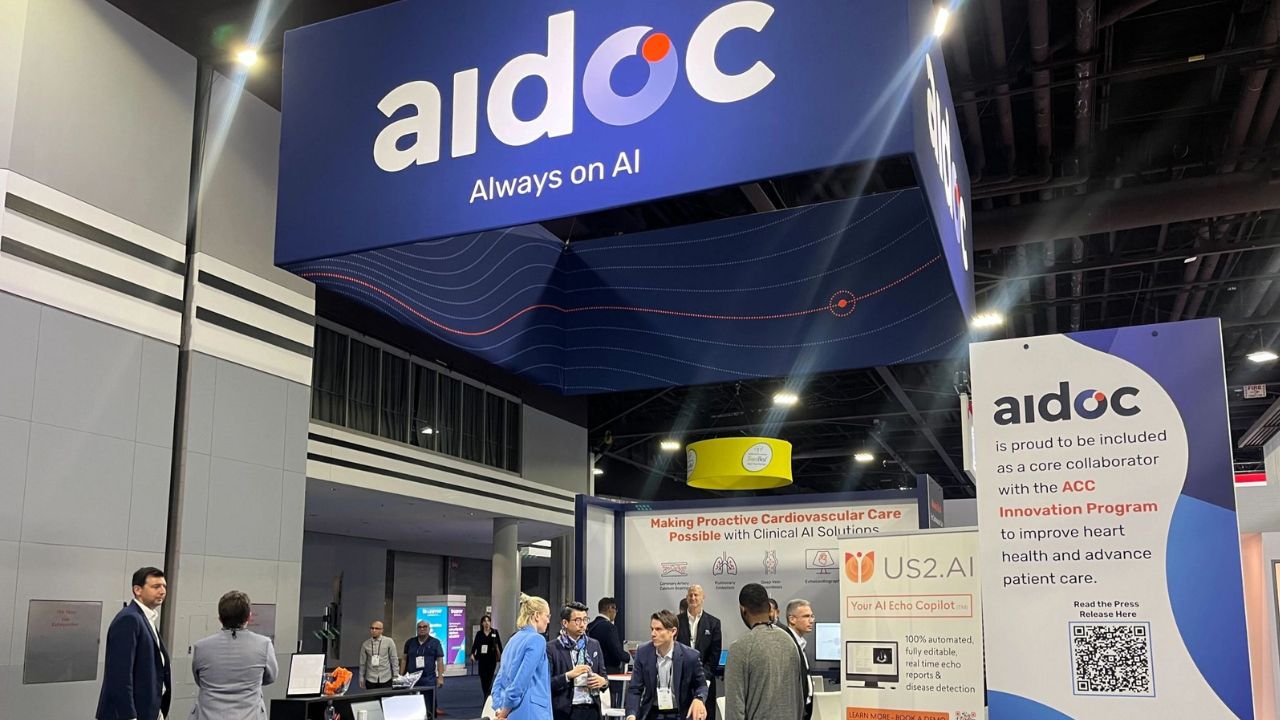Residents of the Future – A series highlighting residents who use artificial intelligence in practice
Artificial intelligence is quickly entering the medical field. In the near future, it could be integrated into the workflows of every specialty in hospitals. AI in radiology is already making strides, and its impact on delivering higher quality patient care has already started to be realized across multiple bodies of scientific research and in practice. AI will also assist residents in their learning – and will undoubtedly shape the future radiology leaders of tomorrow. With AI, residents no longer have to figure out all the data themselves, instead, they need to know how to interpret results (e.g why cases were prioritized). We heard about these changes from Dr. Yosef Chodakiewitz, a resident at Cedars-Sinai in LA and got a firsthand perspective of how Aidoc’s solutions are revolutionizing how residents learn and are impacting their day-to-day routine work.
Q: Can you introduce yourself?
A: My name is Yosef Chodakiewitz, but my friends call me Sefi. I am currently a third-year radiology resident at Cedars-Sinai in Los Angeles. My goal is to subspecialize in neuroradiology. I am currently working on several AI-related research projects in radiology. Some of these research projects include quantifying the accuracy of AI-detection for various acute radiological findings (so far intracranial hemorrhage and pulmonary embolism), using AI as a tool to quantify radiologist error rates and understand perceptual/interpretive error biases, as well as studying radiological workflow optimization and performance improvement with the assistance of AI-based tools in the clinical environment.
Q: What was your initial reaction when artificial intelligence was introduced to your department? Were you familiar with using any artificial intelligence before Aidoc?
A: I was actually quite excited as I was interested in getting involved with AI research in radiology and getting acquainted with the use of AI in radiology practice. I was not directly familiar with using AI in radiology prior to Aidoc as I was at the very start of my residency when I first started working with Aidoc. However, I was familiar with AI in a more conceptual sense given my background in philosophy and neuroscience as an undergraduate student at the University of Southern California, where I was exposed to some of the history, principles and implications of AI in my studies on the philosophy of mind.
Q: How has Aidoc impacted your day-to-day routine work?
A: The Aidoc triage system is impacting my day-to-day work, particularly when I am working as the on-call overnight radiology resident. ER patients and inpatients are scanned 24-hours a day, but most of my attention is initially diverted by default to ER patients during these overnight shifts. The system has flagged scans of inpatients that demonstrated critical findings, bringing those cases to my attention for more immediate review (as part of the old “first-in-first-out” routine, these scans might have otherwise waited hours in the work-cue for review). When the system flags scans that are positive for intracranial hemorrhage or pulmonary embolism, I am able to more expeditiously report these findings that have time-sensitive clinical management implications. Additionally, I have noticed that Aidoc has enhanced our interpretive efficiency and accuracy in certain situations, such as when my colleagues and I are called upon to provide extra rapid preliminary interpretations/wet reads, particularly in those cases where more subtle findings are present that might otherwise have been overlooked during a rapid preliminary review.
Q: Do you think AI provides a tangible benefit to radiology residents – as opposed to residents who haven’t been exposed to AI during their residency? If so – how?
A: In one sense, I think AI provides a tangible benefit to radiology residents (particularly less experienced residents early on in their training) for the sake of more immediate and highest possible quality patient care. This is because AI can be a safety net for less experienced residents, who are certainly more likely to be delayed in detecting or even totally miss a critical finding. On the other hand, I have a small concern that there is a trade-off here. Radiology residents have historically faced a steep learning curve in developing the skills needed to make that initial rapid detection of a subtle finding. The AI safety net might conflict with this necessary resident training experience because as residents we need to struggle and make mistakes or misses in order to grow, learn and become better and faster radiologists. The trade-off here could be that we may introduce AI to experienced radiologists or those that are more advanced in their residency.
Q: In what ways, if any, do you think AI could impact your department’s peer review process?
A: I actually think it could impact our department’s peer review process because in fact one of the research projects we are working on involves using AI-tools to help quantify error rates in reporting CT results. We have presented some of our preliminary results from this project at some local and national meetings. The AI-tools may help make detecting discrepancies between actual imaging findings and radiology reports much more efficient. Previous studies on error rates have generally depended on manual retrospective review and using final reports (rather than intrinsic imaging findings themselves) as the ground truth, which is both impractical with large sets of scans and also places an upper limit on accuracy. We are using AI-tools to screen large sets of CT cases to filter out possibly discrepant cases for a more focused secondary review. These types of studies may not only help better quantify radiological error rates but might also help us understand perceptual biases or other issues that contribute to reporting errors in specific types of cases.
Q: How would you describe your experience with AI in terms of learning – in what ways has it helped you learn?
A: Since I am involved with the research side of AI in addition to using it in clinical practice, AI is constantly playing a role in my learning.
Q: Looking towards the future – how do you see the residents of today using AI in the next ten years? In what parts of the radiology workflow do you think AI will be most impactful?
A: I believe the AI triaging of studies for critical findings will continue to grow, and that the range of critical findings that AI tools can reliably flag will continue to grow. Specifically, regarding the radiologist’s workflow, I think AI could help take over some of the more time consuming but mundane aspects of radiologist’s job, such as measuring sizes/numbers of multiple lesions (or tube/devices) and assessing for changes on follow-up exams.
You may also be interested in PACS RIS and AI: a fully integrated radiology workflow










